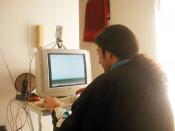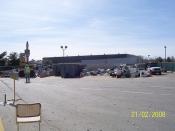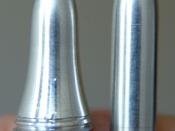Metals:
-Good conductors of electricity
-Good conductors of Heat
-Lustrous or reflective when freshly cut or polished
-Malleable ? can be shaped by beating
-Ductile ? can be drawn into a wire
-Exihibit a range of melting and boiling temperatures
-Generally have high densities
Exceptions in metals:
-Mercury ? liquid at room temperature, unusually low melting point.
-Chromium ? brittle rather than malleable.
Structure of Metals
Model of metal in solid state must be one in which:
-Some of particles are charged and free to move
-There are strong forces between particles throughout metal lattice
-Force that exist between charged particles: electrostatic force
Obtaining stability ?
Releasing one or more of outer shell (valence) electrons into a common pool within lattice. Atom is now a positive ion.
Metallic bonding model
-The only particles that are small enough to move through a solid lattice are electrons. If a metal atom loses one or more electrons it forms a positive ion.
-Ions: atoms or groups of atoms that have either gained or lost electrons and thus have a negative or positive charge.
-In ions, total number in protons differ from total number of electrons
-Cations: atoms that have lost electron to form + charge ions. (Metals)
-Anions: Atoms that have gained electrons form - charge ions. (Non-metals)
-Positive ions are arranged in closely packed structure.
oThis structure described as a regular, 3D lattice of positive ions. The ions occupy fixed positions in the lattice.
oThe much smaller electrons are free to move throughout the lattice.
?Called delocalised electrons
?Because they belong to lattice as a whole
?Delocalised electrons come from valence (outer) shell. (fig 3.5)
oElectrons that are not free to move throughout the lattice:
?Localised electrons
?Localised electrons in inner shell.
-The ions are held in lattice by attraction to delocalised...


